
Robohub.org
Robohub Digest Dec. 2014: Hawking AI warning, fish-tracking success, two new robotics MOOCs
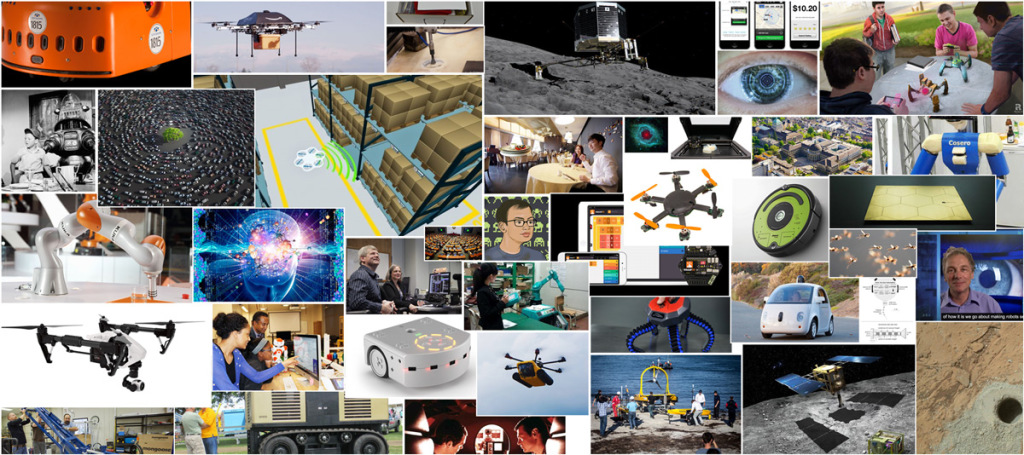
A quick, hassle-free way to stay on top of robotics news , our robotics digest is released on the first Monday of every month. Sign up to get it in your inbox.
Moving inventory
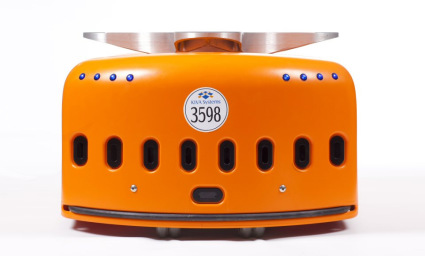 December is one of the busiest months of the year when it comes to shopping. While millions of us managed to avoid the rush to the shops this year by purchasing our gifts online, 15,000 Kiva bots worked overtime at Amazon fulfillment centres to convert our virtual clicks into actual presents in our homes. In Amazon’s pick and pack areas, these bots worked alongside high-end computer systems and human employees to make sure those all important gifts arrived in time for the holidays.
December is one of the busiest months of the year when it comes to shopping. While millions of us managed to avoid the rush to the shops this year by purchasing our gifts online, 15,000 Kiva bots worked overtime at Amazon fulfillment centres to convert our virtual clicks into actual presents in our homes. In Amazon’s pick and pack areas, these bots worked alongside high-end computer systems and human employees to make sure those all important gifts arrived in time for the holidays.
And while the parcels this year were still being delivered by humans, next Christmas may be a different story, as Amazon has now started looking for “Flight Operations Engineers” to test their drone delivery system PrimeAir. With the costs for such a system being estimated at 20 cents/ package by Kiva co-founder Raffaello D’Andrea, it is no surprise that interest in drone delivery is great; however others disagree with this figure and see drone delivery as more of a niche market.
Though we will have to wait and see who will be delivering the presents next year, the Fraunhofer Institute is developing flying robots to keep tabs on warehouse stock and to take over the dreaded task of taking inventory. While these robots won’t have direct contact with customers, their help will undoubtedly be welcomed by the many stores that must close their doors (and lose business) when taking inventory.
Meanwhile, diners in Singapore’s Timbre Group restaurant can expect to be served by indoor delivery drones from autumn 2015.
Ag tech making news
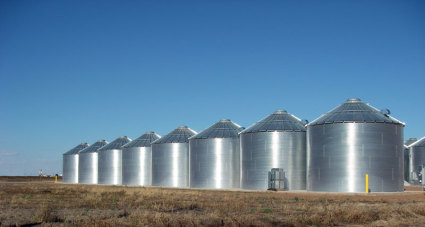 December isn’t a month we traditionally associate with harvest, but agricultural robotics was a hot topic in the news this month, exploring how technology has changed and is changing the age-old traditions of farming. High-tech farming is poised to change the way the world eats. In the New York Times, Quentin Hardy outlined how computer monitoring and data collection have increased productivity for some farmers, but are leading to the demise of others. He further suggested that technology encourages farmers to grow “easy” crops at the cost of diversity and tradition. But Hardy also acknowledges that tech can be advantageous, making farming easier, safer and more efficient.
December isn’t a month we traditionally associate with harvest, but agricultural robotics was a hot topic in the news this month, exploring how technology has changed and is changing the age-old traditions of farming. High-tech farming is poised to change the way the world eats. In the New York Times, Quentin Hardy outlined how computer monitoring and data collection have increased productivity for some farmers, but are leading to the demise of others. He further suggested that technology encourages farmers to grow “easy” crops at the cost of diversity and tradition. But Hardy also acknowledges that tech can be advantageous, making farming easier, safer and more efficient.
A good example of robotics’ beneficial impact in the world of farming is robotic weeding. Traditionally a time-consuming and labour intensive task, particularly in organic farming, technologies for intra-row weed removal have the potential to transform farming in an environmentally friendly manner. Furthermore, with robotic nursery plant pot movers, autonomous tractors and self-driving harvesters, there’s a lot more in the pipeline that will change the way we look at agriculture.
To help figure out how it will all happen, the Australian Centre for Field Robotics is planning an IEEE RAS Summer School on Agricultural Robotics this February (it’s summer there!) to bring together experts in this area and to discuss the potential and future of robots in agriculture.
AI future
 In a BBC interview in early December, Professor Stephen Hawking warned that artificial intelligence could end mankind. According to the famous theoretical physicist, humans could be superseded by AI as the former are limited by slow biological evolution, while the latter is not. The BBC later followed up with James Barrat (author of Our Final Invention), who agreed with Hawking, and with Professor Joanna Bryson, who felt that his view was too pessimistic. Then, Demis Hassabis, founder of DeepMind, said that AI has huge potential to be amazing for humanity, and Oren Etzioni, head of the Paul Allen Institute for Artificial Intelligence, emphasised that AI won’t eliminate us, but will rather empower us to be better. Even NASA scientists added to the debate by suggesting that the dominant form of intelligence in the cosmos are most likely to be artificial.
In a BBC interview in early December, Professor Stephen Hawking warned that artificial intelligence could end mankind. According to the famous theoretical physicist, humans could be superseded by AI as the former are limited by slow biological evolution, while the latter is not. The BBC later followed up with James Barrat (author of Our Final Invention), who agreed with Hawking, and with Professor Joanna Bryson, who felt that his view was too pessimistic. Then, Demis Hassabis, founder of DeepMind, said that AI has huge potential to be amazing for humanity, and Oren Etzioni, head of the Paul Allen Institute for Artificial Intelligence, emphasised that AI won’t eliminate us, but will rather empower us to be better. Even NASA scientists added to the debate by suggesting that the dominant form of intelligence in the cosmos are most likely to be artificial.
The discussion surrounding AI is set to continue into the New Year and beyond.
Advances in space
Following the recent success of the European Space Agency’s (ESA) Rosetta mission that saw spaceprobe Philae land on a comet, the Japanese Aerospace Exploration Agency (JAXA) launched an asteroid-chasing probe this December to meet asteroid 1999 JU3 and (eventually) bring back samples of rock in late 2020.
While ESA and JAXA focus on comets and asteroids, NASA’s New Horizons spacecraft just woke from hibernation 2.9 billion miles from Earth, the farthest any space mission has ever traveled. The mission now prepares for its exploration of the Pluto System in 2015, which will bring us completely novel and unique insights into the far sight of our solar system.
A little closer to home, NASA’s Curiosity is already sending back data from Earth’s neighbour Mars. The unmanned probe found spikes in atmospheric methane and some organic compounds in drill samples that could indicate that there was once life on the Red Planet.
And back here on Earth, DeepSpace Industries partnered with 3D printing company Solid Prototype to reduce fabrication costs, speed turnaround times for new designs, and eliminate mass from spacecraft structures, with a view to revolutionising spacecraft design in the future.
Government and institutional news
 As 2014 drew to a close, many countries were planning for a future in robotics.
As 2014 drew to a close, many countries were planning for a future in robotics.
The South Korean government increased robotics funding for 2015 by 8.3% from $134.3 million to $145.8million. The UK robotics strategy outlined how the country plans to make more use of its expertise in robotics and autonomous systems (RAS) to increase its market share. In Switzerland, ETH Zurich and the University of Zurich announced that they are founding a new translational research centre, bringing together expertise in medicine, engineering and robotics. In Europe, the EU Robotics Brokerage Day held this December provided an opportunity to meet and network with a view to encouraging new partnerships that can compete for the 561 million Euro funding available in the ICT 2015 grant round.
Robotics education
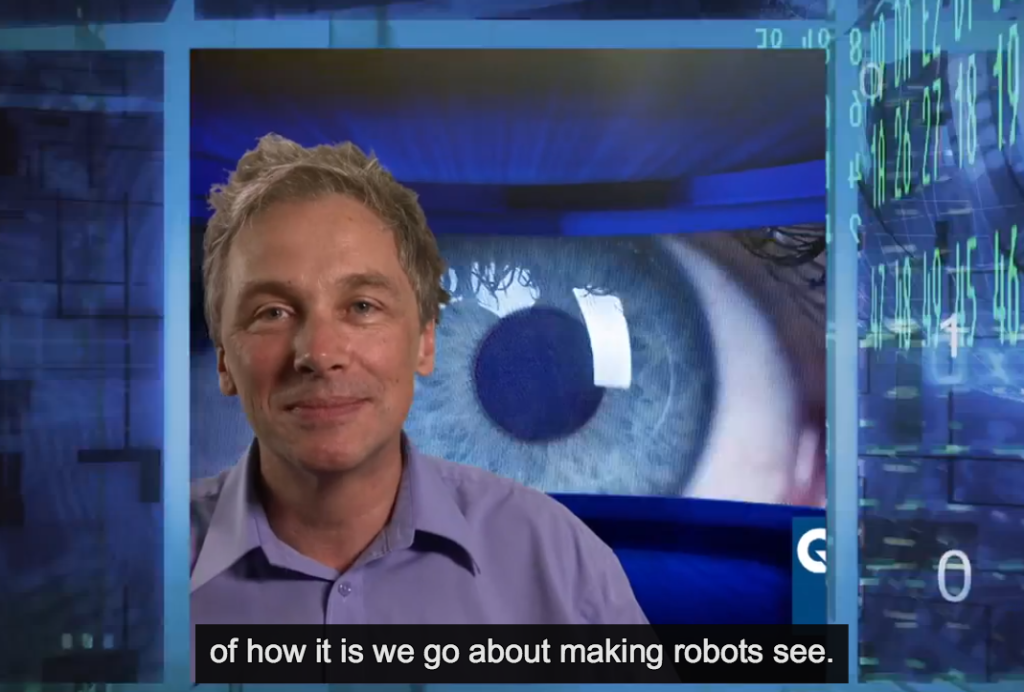 Two MOOCs on robotics led by Peter Corke were announced by Queensland University of Technology this December and registration is now open for the courses “Introduction to Robotics“ and “Robotic Vision”, which will run in early 2015. Registration is free.
Two MOOCs on robotics led by Peter Corke were announced by Queensland University of Technology this December and registration is now open for the courses “Introduction to Robotics“ and “Robotic Vision”, which will run in early 2015. Registration is free.
Meanwhile, other initiatives sought to encourage younger minds to take an interest in robotics this December, including CompuGirls – a project based at Arizona State University that supports girls to develop culturally relevant technical and computer skills. Other initiatives use robotics gaming platorms to teach STEM, and GraspIO, a part hardware, part software DIY electronics platform. Check out also our new educational robotics review series by Kidbotics, who looked at the Thymio II from the perspective of a robotics novice.
Year end accounting
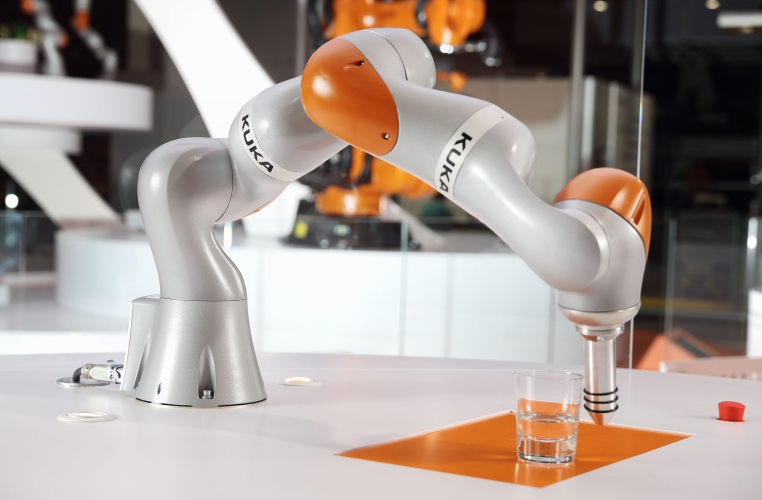 2014’s last set of business news included a variety of announcements, sales and new business ventures. iRobot announced the launch of a new robot “Create 2”, twenty-five per cent of KUKA shares traded hands for 555M Euros, Foxconn found that their robots are unsuitable for iPhone assembly and will be working on next generation robots to increase productivity in coming years, and finally, in an interview with Robohub’s Andra Keay, Carl Vause of Soft Robotics speaks about the challenges of commercializing the soft actuators he is developing.
2014’s last set of business news included a variety of announcements, sales and new business ventures. iRobot announced the launch of a new robot “Create 2”, twenty-five per cent of KUKA shares traded hands for 555M Euros, Foxconn found that their robots are unsuitable for iPhone assembly and will be working on next generation robots to increase productivity in coming years, and finally, in an interview with Robohub’s Andra Keay, Carl Vause of Soft Robotics speaks about the challenges of commercializing the soft actuators he is developing.
With so many business related activities (not only this December but throughout 2014), it is very helpful that Frank Tobe summarised 2014’s robotics business news in his annual review, published this month on Robohub.
Autonomous cars: Prototypes and business models
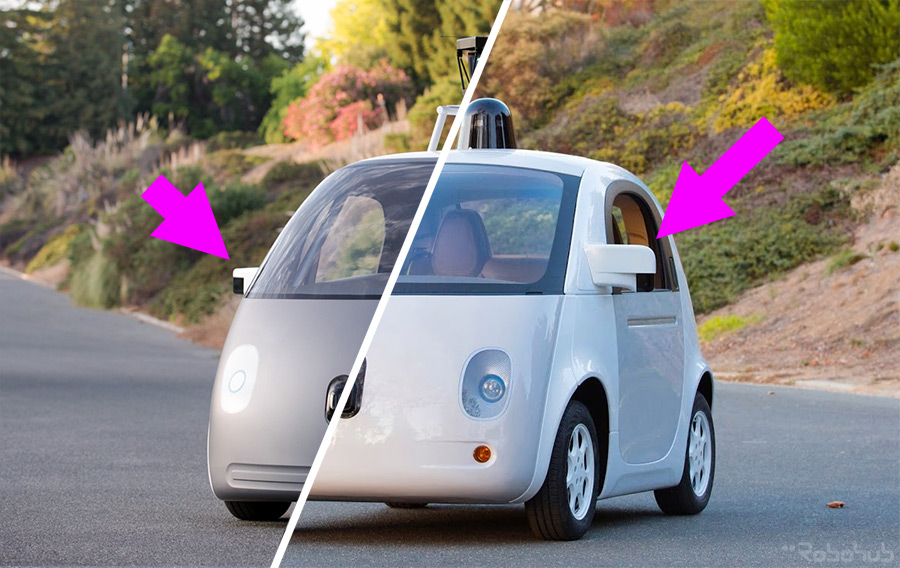 It probably would not be a complete digest if we did not mention autonomous cars – one of the recurring topics of 2014. Just before Christmas, Google revealed their actual self-driving prototype which, after some drives on the closed off test track, they plan to take out on public roads in 2015. With autonomous car developers, such as Google, pushing forward, Brad Templeton from robocars.com discussed possible business models for self-driving cars, and used the recent controversies surrounding online ride service provider Uber as a basis to explore the challanges facing robocars.
It probably would not be a complete digest if we did not mention autonomous cars – one of the recurring topics of 2014. Just before Christmas, Google revealed their actual self-driving prototype which, after some drives on the closed off test track, they plan to take out on public roads in 2015. With autonomous car developers, such as Google, pushing forward, Brad Templeton from robocars.com discussed possible business models for self-driving cars, and used the recent controversies surrounding online ride service provider Uber as a basis to explore the challanges facing robocars.
Drone startups carving out niches
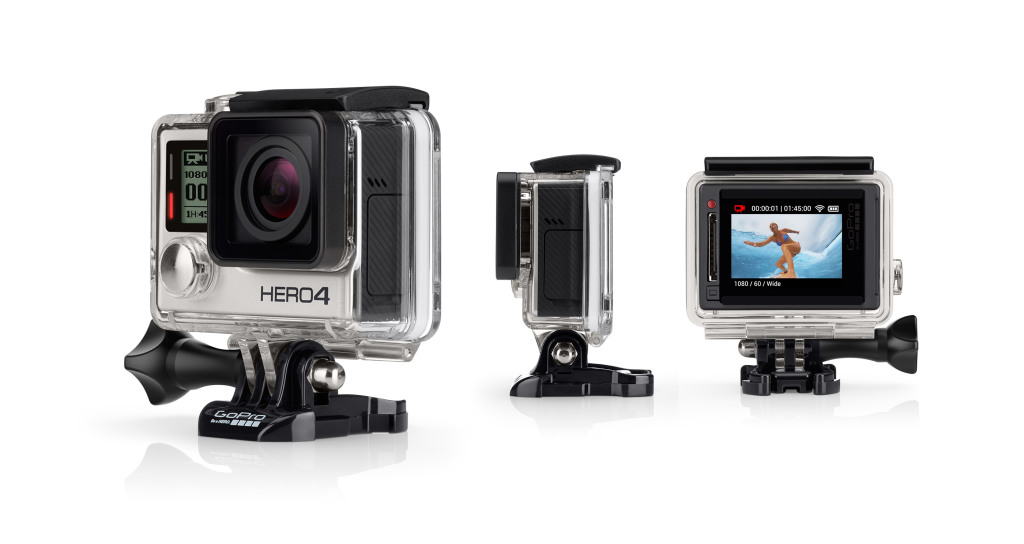 CyPhy Works, led by Helen Greiner, is coming out with a tethered pocket-sized drone. The new pocket drone is designed to support search and rescue efforts by allowing rescue workers to stay safe and let the drone explore territory and buildings lying before them. Also this December, Skysense says it is releasing a charging pad for charging multiple drones at the same time, as well as a hangar for storing and recharging drones between flights.
CyPhy Works, led by Helen Greiner, is coming out with a tethered pocket-sized drone. The new pocket drone is designed to support search and rescue efforts by allowing rescue workers to stay safe and let the drone explore territory and buildings lying before them. Also this December, Skysense says it is releasing a charging pad for charging multiple drones at the same time, as well as a hangar for storing and recharging drones between flights.
Meanwhile, GoPro (a camera manufacturer favoured by extreme sports and aerial photographers) announced it will start making its own drones. Some drones currently on the market, such as the amphibious HexH2o drone (which can shoot both aerial and underwater videos), are already able to carry a GoPro camera, but the manufacturer now wants to capitalise on the rapidly growing hardware market and hopes that their own drone will be ready for Christmas 2015.
Swarming and swimming
Some robots can fly, some robots can swim, some can do both – and some can do it together with others. This ability to work together and function as a swarm is something which roboticists such as Dr Sabine Hauert of Bristol University are looking to use to fight cancer. Hauert is working on tiny particles that could be programmed to swarm and mount a determined attack on cancer in a patient’s body.
 On a much larger scale, others have already built an ocean-going robot fleet, that saw three marine robots successfully complete a fish-tracking mission coordinated by the National Oceanography Centre (NOC). It is hoped that swimming robots will be used more often in biology in the future. For example, evolving swimming robots may be used to study the origins of extinct vertebrates.
On a much larger scale, others have already built an ocean-going robot fleet, that saw three marine robots successfully complete a fish-tracking mission coordinated by the National Oceanography Centre (NOC). It is hoped that swimming robots will be used more often in biology in the future. For example, evolving swimming robots may be used to study the origins of extinct vertebrates.
And with a new low-cost open source underwater robot kit now available, even hobby roboticists can now join the underwater exploration.
Holiday content
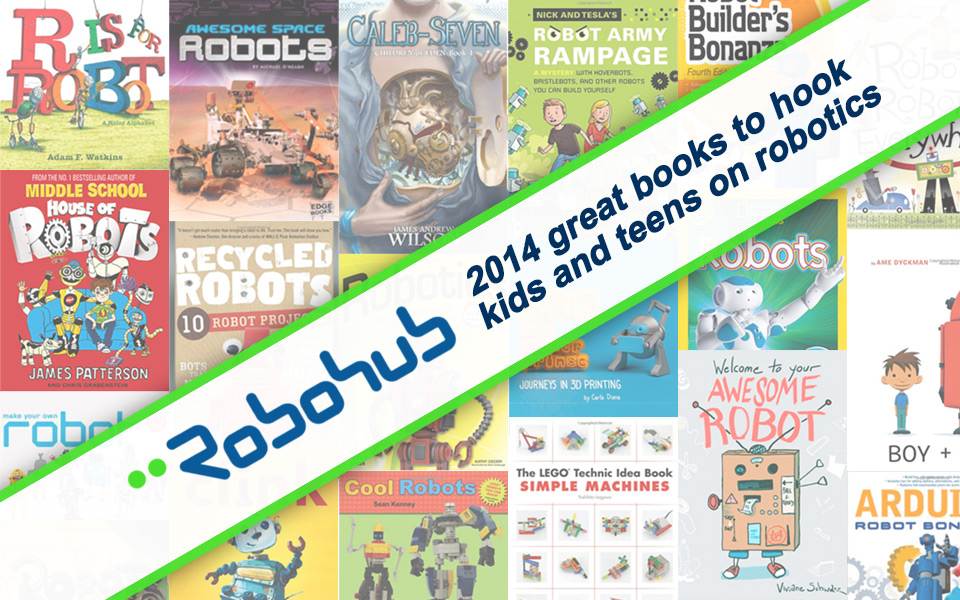 December is Christmas season – and so we could not end our December digest without mentioning some of the interesting gift ideas, season greetings and suggestions to pass the time until Santa comes to visit. Among the gift ideas for Christmas 2014 were essential reading for robot fans, 20 books to get kids into robotics and unique wardrobe ideas for the robot enthusiast. For those looking for something to do over the holiday, we pulled together a list of robot movies to watch and of course recommended our festive greeting video compilation.
December is Christmas season – and so we could not end our December digest without mentioning some of the interesting gift ideas, season greetings and suggestions to pass the time until Santa comes to visit. Among the gift ideas for Christmas 2014 were essential reading for robot fans, 20 books to get kids into robotics and unique wardrobe ideas for the robot enthusiast. For those looking for something to do over the holiday, we pulled together a list of robot movies to watch and of course recommended our festive greeting video compilation.
And finally, if the last digest of the year hasn’t satiated your need for robotics news, we’ve compiled a list of Robohub’s most viewed articles of 2014, covering topics from Cyborgs and AI to Facebook and Fukushima.
Events to watch out for in January
- AIAA Guidance, Navigation, and Control Conference – January 5-9, FL, USA
- 2015 International CES – Jan 6-9, Las Vegas, NV, USA
- A3 Business Forum – Jan 21-12, Disney’s Yacht Club Resort, Lake Buena Vista, FL
- Call for Innorobo Startup Competition Closes – Jan 31, Lyons, France
tags: MOOCs, Robohub Digest




